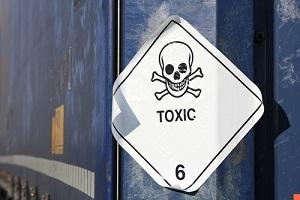What You Should Know About Chemical Burns
 In workplaces nationwide, workers are required to use various chemicals and other materials in order to perform their jobs properly. While many chemicals are fairly safe, others often present severe dangers, including the ability to cause serious burns. If you have suffered a chemical burn while on the job or while visiting an industrial or construction site, seek treatment immediately and learn about your rights to possible compensation.
In workplaces nationwide, workers are required to use various chemicals and other materials in order to perform their jobs properly. While many chemicals are fairly safe, others often present severe dangers, including the ability to cause serious burns. If you have suffered a chemical burn while on the job or while visiting an industrial or construction site, seek treatment immediately and learn about your rights to possible compensation.
Breaking Down a Chemical Burn
Chemicals that can seriously burn a person are usually strong acids or bases. Some such chemicals are found in most homes and may include ammonia, chlorine bleach, and drain cleaning liquids and gels. In manufacturing and industrial settings, however, there are many more chemicals that are often used for a wide range of applications. These chemicals are usually even more concentrated—and therefore more dangerous—than their household counterparts.
When a caustic or corrosive chemical makes contact with your skin, the substance could start to eat away at your flesh. The severity of the burn depends on several factors, including the type of chemical, its concentration, and how long it stays in contact with your skin. The least serious type of chemical burn is called a “superficial injury” as it only damages the top layer of skin. A “dermal injury” or “partial thickness” burn refers to damage to the second layer, called the dermis. The most serious type of chemical burn is a “full-thickness injury” and damages the top and second layers of skin, as well as the tissue underneath, including muscle and fat.
How to Treat a Chemical Burn
Any chemical burn situation requires immediate first aid. Before treating the burn, it is important to get the chemical away from the skin by removing anything that might be contaminated such as clothing, jewelry, watches, etc. Once the site is clear, experts recommend flushing the burn with gentle, running tap water at a cool temperature for at least 10 minutes. Burns that cover large areas of skin may require a cool, gentle shower.
If the burn can be controlled with first aid, over-the-counter drugs like Advil, Tylenol, or Aleve can help with pain and mild swelling. In more extreme situations, it is best to seek professional medical attention to prevent long-term and possibly permanent damage.
Reporting Your Burn
When you suffer a chemical burn on someone else’s property, including your employer’s, it is important to notify someone about the extent of your injuries. If you were just visiting a particular site, you may need to contact the property owner or business owner. If you were injured while performing your job, you need to let your manager or supervisor know.
Seek Guidance from a Winnebago County Burn Injury Lawyer
An experienced Rockford personal injury attorney can help you know whom to tell and how. Our team can also assist you in exploring your options for collecting compensation for your injuries. Call Mannarino & Brasfield, A Division of Schwartz Jambois, at 815-215-7561 for a free consultation today.
Sources:
http://www.emedicinehealth.com/chemical_burns/article_em.htm
http://www.mayoclinic.org/first-aid/first-aid-chemical-burns/basics/art-20056667



